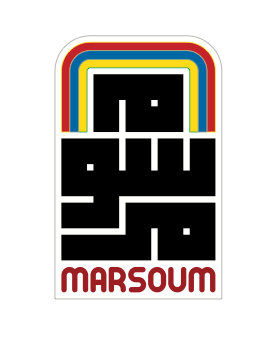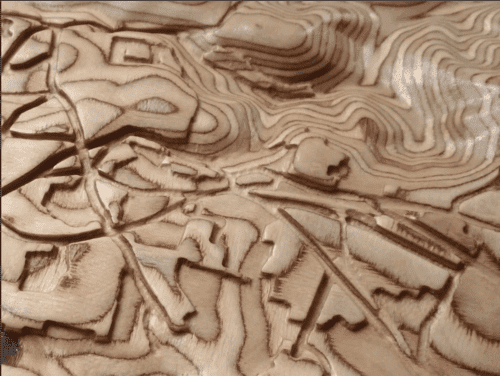
Visualizing Palestine & Marwan Rechmaoui's "A National Monument" In The Press
Share
Visualizing Palestine & Marwan Rechmaoui's "A National Monument" In The Press
3D maps in Beirut tell story of Nakba by Sam Brennan
“The 3D map is the center piece of the exhibition “A National Monument,” which is the last event of a yearlong project by Visualizing Palestine, an organization that creates infographics and artworks on the Israel-Palestine conflict. It is presented in the two-story building — in Le Corbusier’s domino style — that houses Dar El-Nimer, a Beirut-based Palestinian arts and culture nongovernmental organization.”

Rough mock-up of maps equivalent to half of the scale of the 1:20,000 series
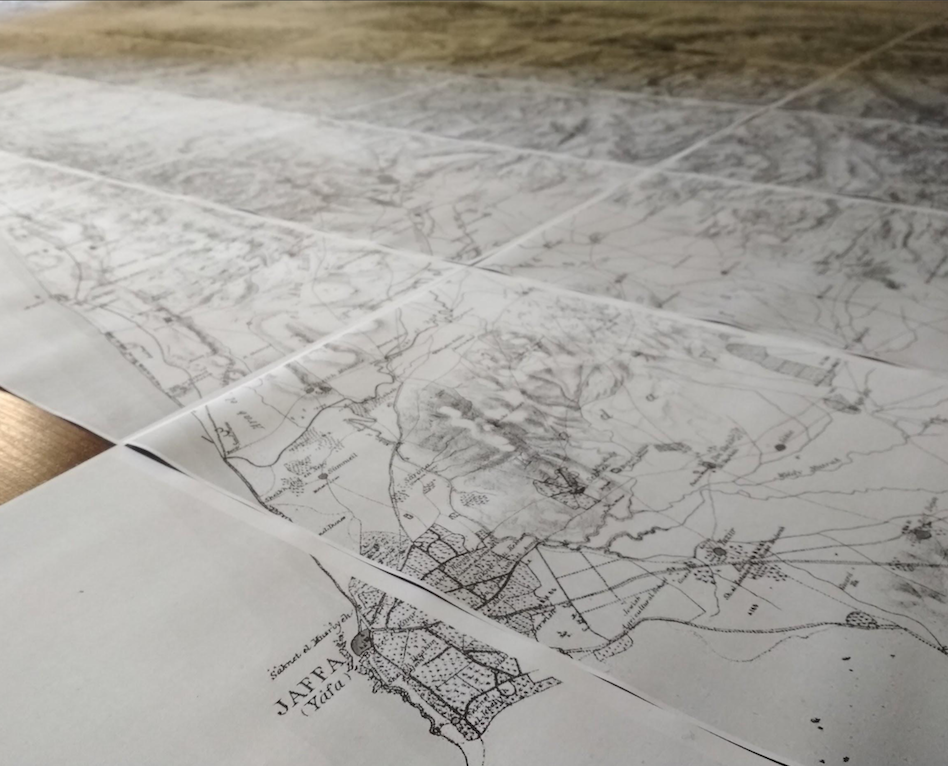
Rough mock-up of maps equivalent to half of the scale of the 1:20,000 series
“Those who know about [the Nakba] assume it is a well-known issue,” said Rechmaoui. “[By contrast] you would be surprised that the Palestine issue is out of the limelight.”
To introduce this issue to a wide audience through art, Rechmaoui and Ahmad Barclay, a partner of Visualizing Palestine and curator of the exhibit, combed through research material and archived maps of the region dating back to the 1800s.

Samples of the 3-dimensional topographic pieces based on British survey maps. Left-to-right: CNC cut plywood, concrete cast and plaster cast.
Visualising Palestine: recounting a historic conflict through maps by India Stoughton
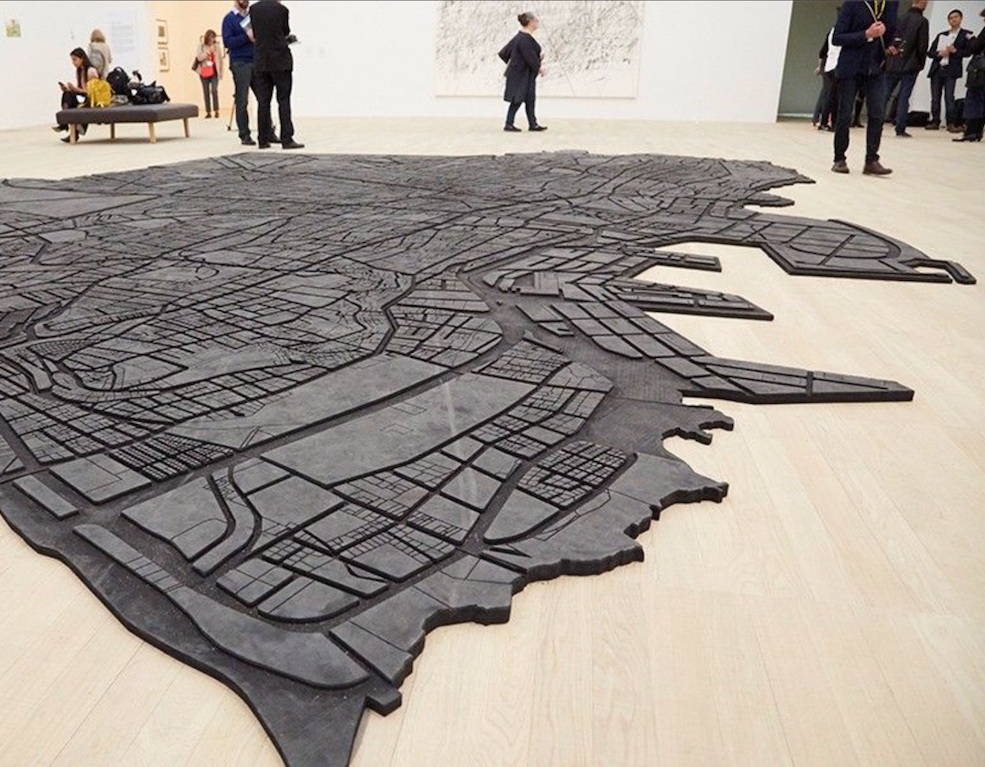
Form inspiration: Beirut Caoutchouc by Marwan Rechmaoui
“Marwan Rechmaoui’s work as an artist has long betrayed a fascination with space, geography and mapping, from his 2004 work Beirut Caoutchouc, a large rubber floor-mat based on a map of Beirut according to sectarian divisions, to his 2016 work Blazon, an enormous installation made up of 400 flags and 59 shields, conveying the written and oral histories of Beirut’s districts as expressed through names, landmarks and figures.”
In A National Monument, [Marwan Rechmaoui] has found a way to use the tools by which the British divided and appropriated Palestine – employing maps and grids to divide it up mathematically, as though it was an abstract concept, rather than a physical land, home to thousands of people – to reclaim Palestine as a tactile reality, both on a personal and a public level.
“I’m learning a lot about the topography of Palestine, but by hand, not by eye. I have to touch it all the time, see where the hard parts are, to sand them and make them softer, so I spend my whole day like a blind person going around the topography of the country,” he says. “You start feeling the difference between coastal cities and mountainous cities. It’s like Braille. And symbolically it’s very much like that, because it’s a place that you don’t see, but you’re touching it.”
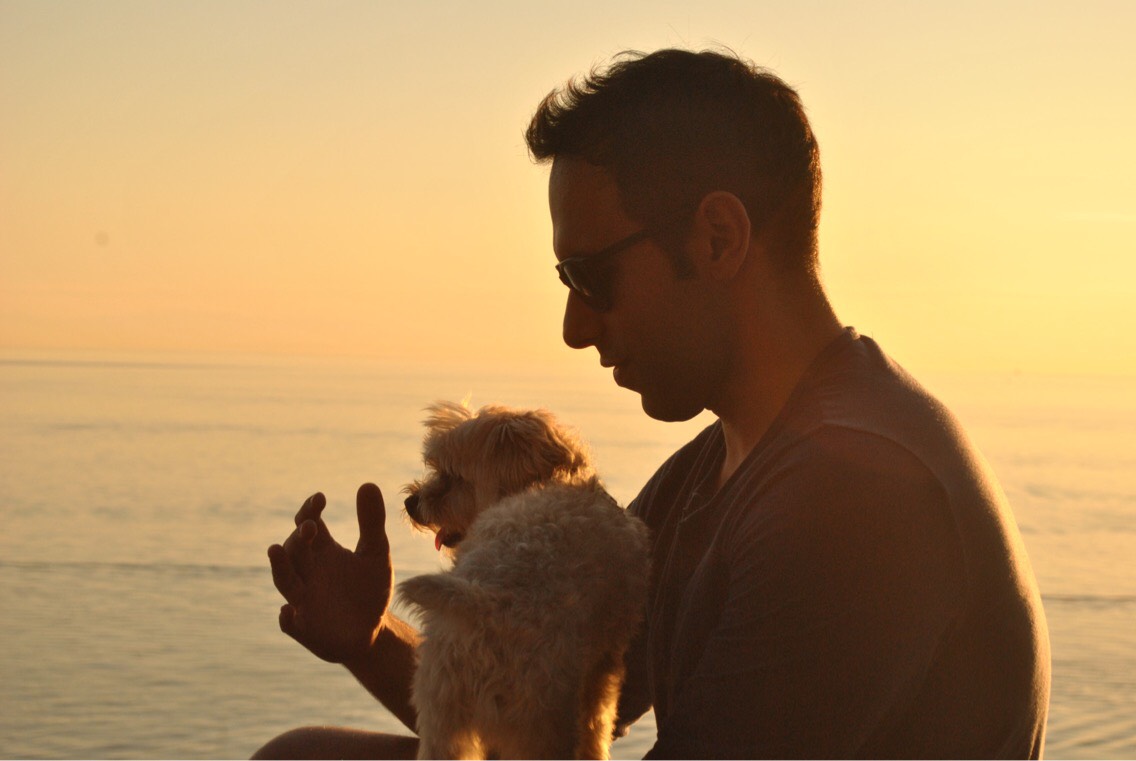
Edited by: Abdulah Al-Ghoul
Abdulah Al-Ghoul is a strategist and digital project manager with a background in several industries like hospitality, fine arts and marketing.
Abdulah founded the Marsoum Art Collective in 2018.
